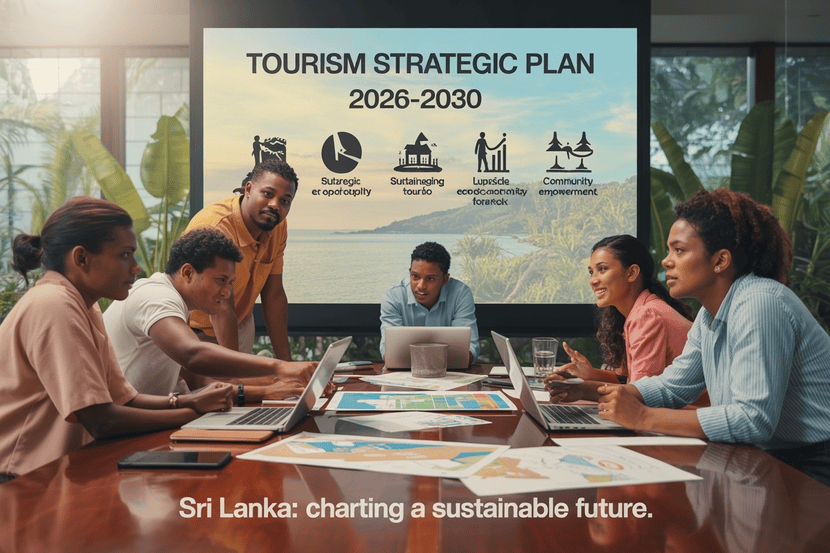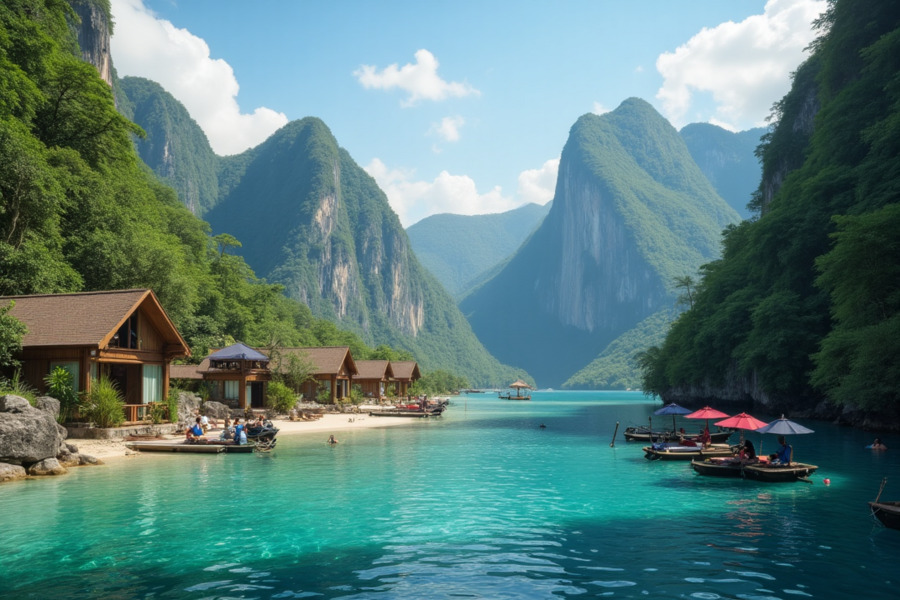≡-Could the Quintana Roo Sustainable Tourism Master Plan Survey Become a Model for Global Travel in Mexico? – Viral of Today
<> Viral of Today <>
Home » America Travel News » Could the Quintana Roo Sustainable Tourism Master Plan Survey Become a Model for Global Travel in Mexico? Published on
September 4, 2025The Sustainable Tourism Master Plan in Quintana Roo was often described as more than a simple roadmap for the Mexican Caribbean. Observers explained that it represented a carefully constructed framework designed to redefine the region’s identity while also offering a wider lesson for the global tourism industry. At its foundation was a bold rebranding initiative meant to secure a stronger image while ensuring that sustainability remained at the center of every development.Commentators believed that the fast-evolving nature of international travel meant destinations could no longer rely on traditional models. They explained that modern travelers were searching for authentic cultural connections, environmentally responsible practices, and meaningful community involvement. In response, Quintana Roo had developed a plan to merge local voices with global standards, creating a tourism identity that emphasized competitiveness without sacrificing heritage or ecology.Analysts insisted that through updated visual frameworks, comprehensive surveys, and deeper engagement with residents, the region was preparing itself to meet the demands of the future. They said this move was more than cosmetic branding. It was an open declaration that Quintana Roo wanted to stand as an example of how destinations could achieve growth responsibly while preserving identity.Global Impacts on the Travel IndustryIndustry experts said the transformation in Quintana Roo needed to be understood as part of a much broader movement within tourism worldwide. They remarked that destinations across the globe were now recognizing the urgency of sustainability-driven branding and the importance of engaging local communities.It was explained that the Mexican Caribbean was increasingly regarded as a case study in how to adapt effectively to shifting traveler preferences. Analysts highlighted that its emphasis on long-term planning, combined with clear communication strategies, positioned it as an innovator rather than a follower in the tourism sector.They predicted several global outcomes of such initiatives:Travelers would increasingly encounter eco-conscious services and responsible practices during their journeys.Destinations would attract a growing number of visitors who actively sought sustainable travel experiences.Communities would benefit from models that balanced economic opportunity with cultural preservation and environmental protection.Commentators concluded that the future of global tourism would not be defined by rapid expansion alone. Instead, they argued that its success would rely on inclusive participation, sustainability-based innovation, and development strategies that resonated with the values of modern travelers.Building a New Tourism Model for the Mexican CaribbeanObservers stated that the heart of these changes in Quintana Roo was the construction of a new tourism model for the Mexican Caribbean. This approach was seen as a clear departure from past models that had often prioritized growth at the expense of sustainability.The plan was said to rest on four central pillars:Embedding responsibility and justice into all tourism strategies.Prioritizing environmental stewardship to protect delicate marine and coastal ecosystems.Preserving cultural heritage, traditions, and identity.Ensuring prosperity and well-being for local residents through fair distribution of benefits.Industry experts argued that this model sought to maintain the region’s appeal for travelers while protecting its resources for future generations. Commentators believed this commitment reflected the growing global expectation for destinations that blended authenticity with accountability. They said that such a strategy was likely to make Quintana Roo stand out as a leader in an increasingly eco-conscious tourism landscape.Survey for the Update of the Master Plan 2025As part of its evolving process, Quintana Roo introduced the Survey for the Update of the Sustainable Tourism Master Plan 2025. Commentators emphasized that this step was distinctive because it was made available in both Spanish and Mayan, which enabled broader participation across diverse communities.Authorities explained that this effort aimed to capture how residents perceived tourism and what vision they held for the region’s future. Observers noted that such inclusivity underscored the belief that tourism development could not succeed without the involvement of local voices.Analysts highlighted that the responses would provide valuable insight into shaping strategies that reflected everyday realities while also aligning with global sustainability goals. They said this participatory approach would help establish greater trust between policymakers and residents, strengthening the sense of shared ownership over the region’s future.Updating the Visual and Conceptual Identity of the Master Plan 2030Reports indicated that the Sustainable Tourism Master Plan 2030 was also undergoing an update in parallel with other initiatives. The refresh was designed to align Quintana Roo’s strategies with emerging international trends in sustainability and tourism development.Observers explained that this transformation involved changes in both visual identity and conceptual frameworks. They said the goal was to better communicate the relevance of the plan to both visitors and stakeholders.Industry experts commented that this move illustrated Quintana Roo’s determination to position itself as an innovator within the travel industry. They remarked that destinations that failed to integrate eco-consciousness and accountability into their strategies risked falling behind. By contrast, they said that regions such as Quintana Roo that actively incorporated these values into their frameworks were likely to secure long-term competitiveness and international recognition.Rebranding Efforts for the Master Plan 2050Toward the end of the previous year, Quintana Roo announced the launch of a Rebranding Service for its Sustainable Tourism Master Plan 2050. Analysts interpreted this as a significant step forward in refreshing the region’s international image while ensuring sustainability remained central.The rebranding was described as an opportunity to:Reinforce the values that defined the region’s identity.Simplify adoption of the plan across various stakeholders.Enhance visibility and recognition both nationally and internationally.Reports mentioned that the updated identity was being expressed through modern design elements, inclusive language, and clear visual guidelines. A strong communication strategy was also introduced to ensure consistent messaging across different platforms.Commentators noted that this reflected a growing trend in tourism where destinations were no longer satisfied with static promotional campaigns. They argued that continuous adaptation and redefinition had become essential to staying aligned with global tourism expectations.A Unified Vision for the Mexican CaribbeanOfficials stressed that the broader transformation in Quintana Roo extended well beyond cosmetic branding or promotional updates. They explained that the primary aim was to create a unified vision for the Mexican Caribbean—one that reflected global demands while still safeguarding local identity.This vision was said to rest on three core priorities:Environmental preservation, especially the protection of marine ecosystems and fragile coastal zones.Cultural safeguarding, including the celebration of heritage, traditions, and authentic identity.Economic prosperity, ensuring that tourism benefits were distributed fairly among communities.Commentators argued that through these guiding principles, the Sustainable Tourism Master Plan was redefining growth in terms of justice, responsibility, and innovation. They noted that conscious travelers around the world were increasingly demanding such frameworks when choosing their destinations.Quintana Roo as a Global BlueprintObservers frequently described the Sustainable Tourism Master Plan in Quintana Roo as more than just a local initiative. They characterized it as a blueprint for the global tourism industry, one that demonstrated how destinations could evolve without losing their cultural authenticity or ecological balance.They pointed out that travelers arriving in Quintana Roo in the coming years were likely to experience a destination that blended heritage with modern innovation. Commentators emphasized that tourism in the region was not simply about leisure or entertainment. Instead, it aimed to integrate environmental protection and community well-being into the very core of its experience.Experts explained that while many regions were still catching up to the pressures of environmental responsibility, Quintana Roo had positioned itself as a leader. They noted that by reimagining its tourism model, the region was presenting itself not as a follower of global trends but as a creator of them.Source: TYT Newsroom
This information will surprise you!
See also
- Read until the end to discover everything.
- Important information you need to know.
- Interesting facts and helpful tips.
Conclusion
Did you enjoy the news? Keep following us daily!













